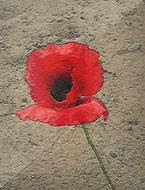

This was my first attempt at a top down Raglan sweater. In the past I've always knitted sweaters the "old fashioned way": four parts-- front, back, and two sleeves.
I used Paton's SWS Yarn. 70% wool, 30% soy silk. The SWS stands for Soy-Wool-Stripes. The yarn comes in vibrant colors, is strong, is spun with very little twist (almost Lopi like), and the swatch I knitted came out beautiful. However, the yarn has shortcomings which equal the good points.
I used Paton's SWS Yarn. 70% wool, 30% soy silk. The SWS stands for Soy-Wool-Stripes. The yarn comes in vibrant colors, is strong, is spun with very little twist (almost Lopi like), and the swatch I knitted came out beautiful. However, the yarn has shortcomings which equal the good points.
The stripes are wide; therefore it is really not suitable for a top down raglan sweater. The stripes are rather narrow in the body of the sweater, but become wider as the Knitting gets narrower, such as sleeves. The yarn has too many knots, which I could deal with provided the color sequence would always be in correct sequence. Alas it isn't. Twice I came upon a skein in which the yarn seemed to be knotted together haphazardly. The mill must have run out when skeining the yarn and gave absolutely no thought to knot in the right color sequence. I have not attempted to felt the yarn as yet, but judging by the way the loose ends started clinging together, I would say it should do well and the colorway of the yarn may be best suited to items that do not appreciably change in width.
By the way, the no. of knots in the yarn seem to be in line with Noro, but the big difference is that I have not found a skein of Noro where the yarn was knotted together haphazardly with no regard to the color sequence. On the other side, the Paton SWS yarn is a lot cheaper, particularly since I bought it at one of the local discount craft stores.
Sweater Construction:
I had never knitted a top down raglan sweater and, therefore, I wanted to try one, particularly since my daughter had tried some, but does not as yet have the experience to adapt the top down sweater pattern for her particular figure. I followed Barbara Walker's instructions in her book "From the Top Down." The changes I made are for a person whose upper body is rather short, doesn't like anything close to her neck, and is heavy busted. I did not make the front increases as Barbara Walker suggested, but cast on all stitches for the front at one time--plus 1" of extra stitches--after knitting 3" of the back and sleeves. This gave enough room for finishing the neckline without choking her. When it came time to start the body of the sweater, I increased under each arm by 3" of stitches. I also knitted 1 purl stitch all the way down to make fake underarm and body seams.
So here it is, a sweater that can act as a guide for future sweaters from the top down. Thus I can excuse the uneven striping of the yarn.

I'm currently have the same stripe problem with a sweater I'm knitting for my grandchild. I have encountered too many problems lately with yarn (expensive at that) that has too many knots, frays, etc. My yarn shop will not take it back unless there are five or more knots. My answer to all that....I won't buy it again. Jitterbug is one of those, etc.
ReplyDelete